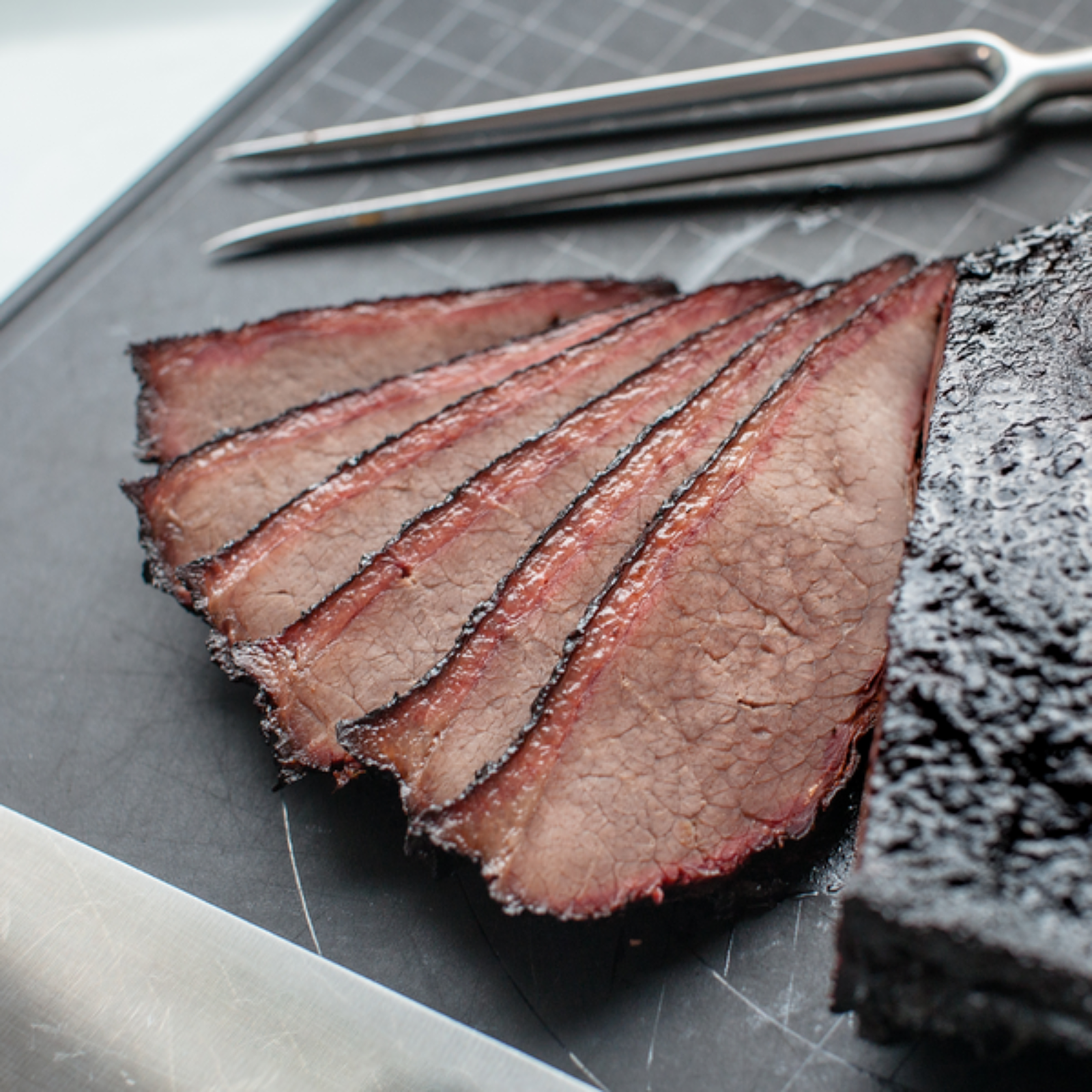
State of Ground Beef Prices: Wholesale Restaurant Food Cost Trends
See trends and fluctuations for wholesale restaurant ground beef prices based on proprietary Toast data.

Justin GuinnAuthor


Restaurant Cost Control Guide
Use this guide to learn more about your restaurant costs, how to track them, and steps you can take to help maximize your profitability.
Beef prices obviously have an impact on how much restaurants pay for their ground beef — and wholesale ground beef prices dictate the retail price for restaurant hamburgers, cheeseburgers, and other ground beef dishes.
Ground beef is the everyman’s approach to beef. It can be dressed up with beef cheeks, sirloin, brisket, and more. Or it can be tamped down to just include ground chuck or a mix of ground trimmings from the butchering process.
Restaurant operators, especially burger joints, need to stay on top of ground beef price movements and adjust their menu prices accordingly.
Restaurant Operator Insights Report
See insights from real restaurant operators which can help you benchmark your current and planned restaurant technology stack against your peers as we head into 2024 and beyond.

Restaurant ground beef price trends
Toast is the point of sale system built for restaurants.
We're able to calculate the average monthly prices that restaurants pay for ground beef and other ingredients by using proprietary data from xtraCHEF by Toast, our invoice automation and recipe costing tool.
The average national price per pound of ground beef is $3.78 in August. This represents a 7% month-over-month decrease in average price of wholesale restaurant ground beef.
Restaurant serving sizes for ground beef are usually by the quarter-pound and up.
Here's the breakdown of recent MoM fluctuations in wholesale ground beef prices:
Here's a breakdown of year-over-year ground beef price movements over the past five years for restaurants:
Going back to November 2022, the cost of ground beef has fluctuated from a high of $4.15 to a low of $3.34 — with the average price during that time sitting at $3.84 per pound.
Fatty vs lean vs extra lean ground beef
Ground beef is available in various levels of fat content, ranging from fatty to lean to extra lean. These different options provide chefs and restaurant operators with flexibility in selecting ground beef based on their desired flavor, juiciness, and health considerations.
- Fatty ground beef: Fatty ground beef typically contains around 70-80% lean meat and 20-30% fat. This higher fat content adds rich flavor and juiciness to burgers, making them incredibly delicious. The fat helps to keep the meat moist during cooking, resulting in a juicy and flavorful patty. Fatty ground beef is a popular choice for those who prioritize taste above all else.
- Lean ground beef: Lean ground beef usually contains around 90-95% lean meat and 5-10% fat. This option offers a balance between flavor and lower fat content, making it a healthier choice for those looking to reduce fat intake. Lean ground beef still provides good flavor, but with less pronounced juiciness compared to fatty ground beef. It is a versatile choice for various dishes, including burgers and meatballs.
- Extra lean ground beef: Extra lean ground beef contains approximately 95-98% lean meat and only 2-5% fat. It is the leanest option available and is ideal for health-conscious individuals who want to enjoy ground beef while minimizing fat content. While it may have a slightly drier texture compared to the higher fat options, it can be seasoned and cooked properly to retain juiciness. Extra lean ground beef is a go-to choice for those on a low-fat diet.
When it comes to selecting the right ground beef for hamburgers, personal preference plays a significant role. Some people prefer the rich flavor and juiciness of fatty ground beef, while others opt for the lean or extra lean options for health reasons. Ultimately, the choice of ground beef depends on the desired taste, texture, and dietary considerations.
Restaurant Operator Insights Report
See insights from real restaurant operators which can help you benchmark your current and planned restaurant technology stack against your peers as we head into 2024 and beyond.

Recent ground beef shortage
The food industry experienced a temporary shortage of ground beef due to various factors. The COVID-19 pandemic disrupted the restaurant supply chain, leading to temporary closures of meat processing plants and a reduction in overall production. This, in turn, resulted in limited availability of ground beef, affecting restaurants and consumers' ability to access this staple ingredient.
While the ground beef shortage was temporary, it highlighted the vulnerabilities of the food supply chain and prompted the industry to adapt and implement measures to mitigate future challenges. The situation also led to an increased focus on sustainable and local food production methods to ensure a more resilient supply chain.
Beef production in Wisconsin, Iowa, and other states
Wisconsin and Iowa are key players in beef production within the United States. These states, along with several others, contribute significantly to the country's overall beef industry.
Wisconsin boasts a thriving beef industry, with a long history of cattle farming. The state's favorable climate and abundance of pastureland make it conducive for raising cattle. Dairy farming is also a significant component of Wisconsin's agricultural sector, and the dairy industry contributes to beef production through cull cows (dairy cows no longer suitable for milking) being processed for beef.
Iowa is renowned for its extensive corn and soybean production, making it a vital contributor to beef production. Corn plays a significant role in finishing cattle, as it is a primary feed source during the later stages of their lives. Iowa's land resources and favorable growing conditions make it an ideal location for beef cattle farming, and the state has a strong presence in the beef industry.
Other states, such as Texas, Nebraska, Kansas, and Colorado, also play crucial roles in beef production. These states are known for their vast expanses of pastureland, quality grazing, and feed resources. They have robust cattle farming industries and are often referred to as the "beef belt" of the United States.
Start tracking ground beef prices today
Ground beef is an essential protein ingredient across a wide swath of cuisines. That's why it's critical for operators that cook with ground beef to consistently track and incorporating the prices into financial reports.
Tracking restaurant ingredient costs requires operators to have a strong back-of-house foundation built on.
Invoices are the single source of truth for restaurant costs — pinpointing prices and fluctuations for individual ingredients as well as paper goods, non-alcoholic beverages, and more. This is especially critical for ground beef as so many restaurants have their own custom grinds — requiring them to track multiples cost inputs in order to get their ground beef just right.
With accurate and up-to-date ingredient prices from invoices, operators can start. Plate costing is a detailed exercise that zooms into the recipes and/or individual ingredients that make up a dish — requiring detailed for ingredients.
Costing exercises can help show how each component is contributing to the overall profitability of a dish or drink. And can help make it easier to calculate and achieve an ideal balance between portions and profits.
Is this article helpful?
DISCLAIMER: This information is provided for general informational purposes only, and publication does not constitute an endorsement. Toast does not warrant the accuracy or completeness of any information, text, graphics, links, or other items contained within this content. Toast does not guarantee you will achieve any specific results if you follow any advice herein. It may be advisable for you to consult with a professional such as a lawyer, accountant, or business advisor for advice specific to your situation.
Read More
Subscribe to On the Line
Sign up to get industry intel, advice, tools, and honest takes from real people tackling their restaurants’ greatest challenges.



